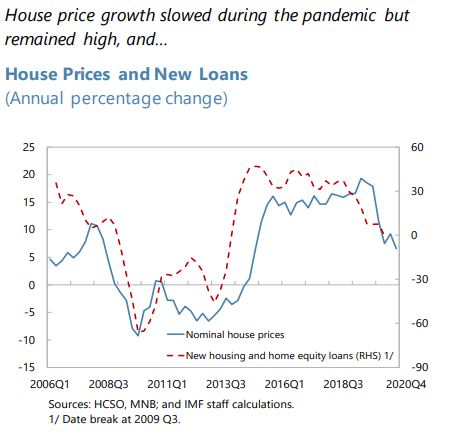Tuesday, June 22, 2021
Housing Market in Slovak Republic
From the IMF’s latest report on Slovak Republic:
“Credit growth remained resilient, fueled by mortgage loans, while business lending slowed, and consumer loans contracted (…). Real estate prices continued to rise. With the significant GDP decline in 2020, a non-negligible gap emerged between actual and model-predicted house values though the extent of house price misalignment is difficult to gauge given the unique nature of the shock.
(…)
The macroprudential stance is broadly adequate from a financial stability point of view but there is scope to augment the macroprudential policy mix if housing market imbalances persist. Systemic risk stemming from the housing market, while manageable, has not dissipated. Notwithstanding the tightening of regulatory limits, mortgage credit and real estate prices continue to grow, and housing loans account for an increasing share in banks’ private sector loan portfolio.”
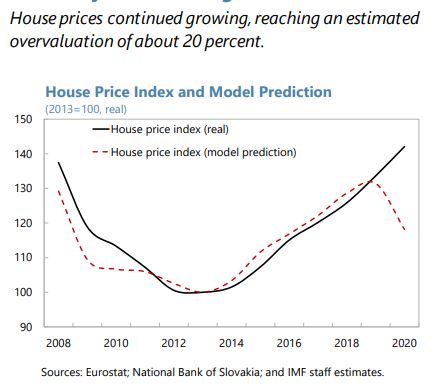
From the IMF’s latest report on Slovak Republic:
“Credit growth remained resilient, fueled by mortgage loans, while business lending slowed, and consumer loans contracted (…). Real estate prices continued to rise. With the significant GDP decline in 2020, a non-negligible gap emerged between actual and model-predicted house values though the extent of house price misalignment is difficult to gauge given the unique nature of the shock.
(…)
The macroprudential stance is broadly adequate from a financial stability point of view but there is scope to augment the macroprudential policy mix if housing market imbalances persist.
Posted by at 2:21 PM
Labels: Global Housing Watch
Sunday, June 20, 2021
Housing Market in Hungary
Posted by at 2:15 PM
Labels: Global Housing Watch
Thursday, June 17, 2021
Housing Market in Ireland
From the IMF’s latest report on Ireland:
“Well-targeted macroprudential measures contained the build-up of vulnerabilities in the housing market and helped stabilize prices, but supply shortages and affordability concerns are on the rise. The initial dampening impact of COVID on the housing market was followed by a robust recovery in H2:2020, with the overall fall in residential construction only at 2 percent in 2020, which was largely due to the stringent first lockdown. To ease the dampening impact of the third lockdown on housing construction, the Health Regulations allowed for the designation of certain social housing projects as essential projects13, however, the housing supply-demand gap will likely widen further in the pandemic aftermath. After a small decline in H1:2020, house prices started to grow as demand exceeded supply. If an increasing part of household pandemic savings is directed to the housing market it could put further upward pressure on house prices.
Reducing shortages in affordable housing requires a multi-pronged approach. The government’s effort in this regard is welcome but more needs to be done by (i) releasing more land for development, (ii) streamlining approval processes for permits and re-zoning, (iii) assessing incentives to build rental properties, and (iv) increasing supply, including of social housing. The establishing of the Land Development Agency is a step in the right direction. On the other hand, policies should resist stimulating demand further given the existing supply-demand imbalances, and avoid resorting to short-term solutions such as relaxing prudential regulations to enable households to borrow more and the program to subsidize home purchase needs to be carefully designed and remain limited in size in order to minimize risks to the financial sector.
(…)
The authorities reiterated their commitment to address the housing and climate change challenges. They noted the progress towards improving housing supply and affordability through a comprehensive policy package, including the Help-to-buy Program, National Cost Rental Policy, and Land Development Agency (LDA) Bill, that provides a permanent basis to increase the supply of social and affordable homes and promote optimal use of State land. The recently legislated Affordable Housing Bill includes a 10 percent affordable housing requirement on new developments in addition to the existing requirement for 10 percent social housing. The authorities highlighted the recently legislated carbon tax increase, with a trajectory to 2030, and the ring-fenced use of the projected revenues of €9.5 billion for investment in energy efficiency, just transition, and low-emission agriculture. Additionally, the National Home Retrofit Scheme provides incentives for homeowners to improve their energy rating with 35 to 50 percent grant elements.”
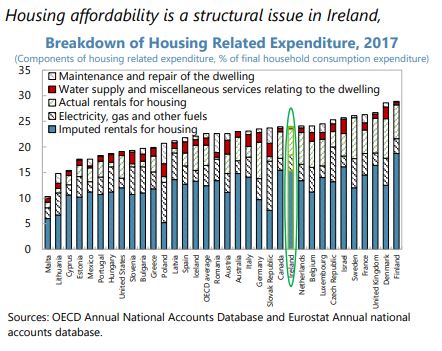
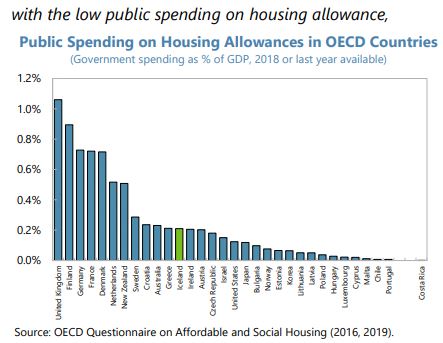
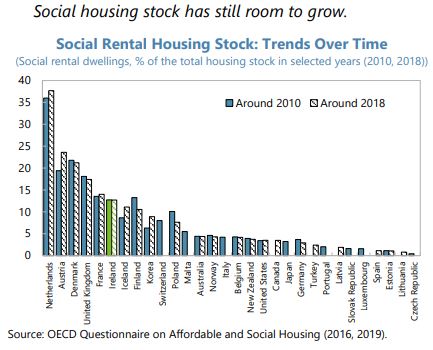
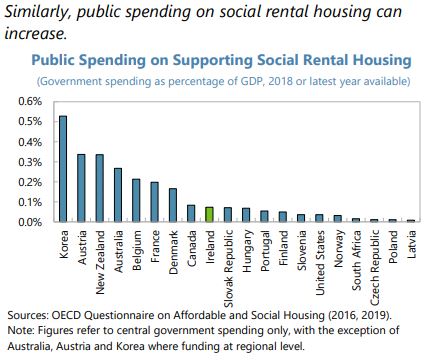
From the IMF’s latest report on Ireland:
“Well-targeted macroprudential measures contained the build-up of vulnerabilities in the housing market and helped stabilize prices, but supply shortages and affordability concerns are on the rise. The initial dampening impact of COVID on the housing market was followed by a robust recovery in H2:2020, with the overall fall in residential construction only at 2 percent in 2020, which was largely due to the stringent first lockdown.
Posted by at 3:54 PM
Labels: Global Housing Watch
Housing Market in Cyprus
From the IMF’s latest report on Cyprus:
“Nevertheless, challenges are building. Nearly half of legacy NPLs were terminated five years earlier, potentially requiring sizable write-downs (Annex VI). Foreclosures have been suspended until end-July for smaller, collateralized loans and proposals under discussion in Parliament are expected to weaken the framework (¶22, third bullet). More than 80 percent of bank loans are to highly leveraged households and SMEs, concentrated in sectors like accommodation, food and retail, implying a high risk of an escalation of default rates and lower recovery value of assets after the expiry of loan repayment and foreclosure moratorium (Box 1). Banks are also exposed to property market risks through real estate holdings and collateral valuation. Although regulatory forbearance and fiscal support have prevented an immediate surge in loan impairments, a new wave of defaults as loan repayment obligations resume amidst tapering fiscal support could quickly consume the capital buffers of banks. Based on a stylized scenario with a 10 percent increase10 in NPLs that would push the latter to some 19.5 percent of total loans from the current 17.7 percent, staff estimates that restoring capital and provisions to pre-pandemic levels would entail capital needs of 1.5 percent of GDP.
(…)
Macro-financial risks from possible declines in property prices should be closely monitored, especially given the continued active use of debt-to-asset swaps in NPL resolution by banks and CACs. Risks appear limited for now given stable residential price developments (Text Figure 5 and Figure 8) and limited size of commercial real estate transactions. To ensure proper collateral valuation, results of actual sales transactions of repossessed collateral properties should be used by banks and CACs to review adequacy of valuation methodologies of these assets. Supervisory guidance to prevent excessive holding of repossessed collateral assets by banks should be maintained.”
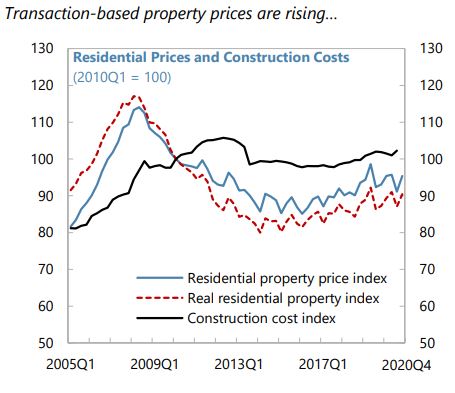
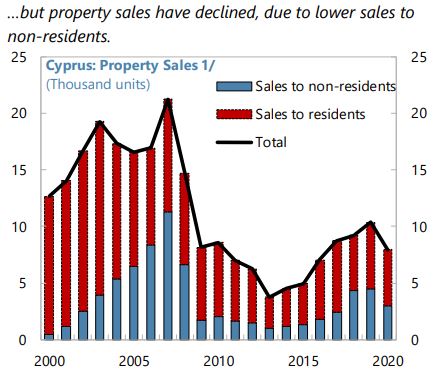
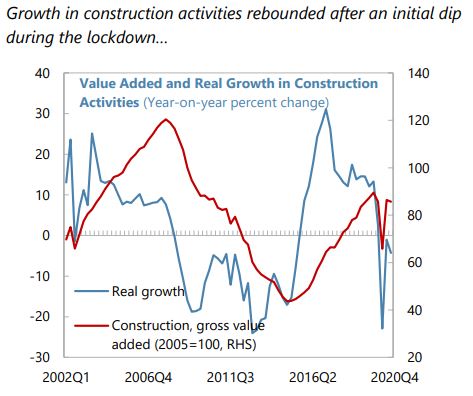
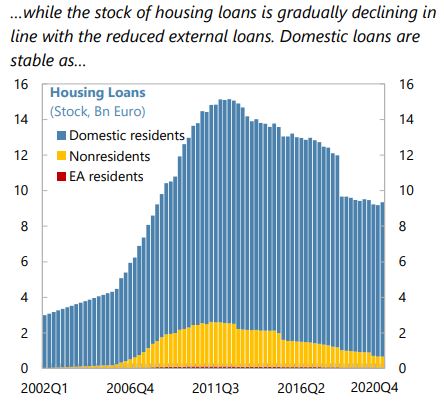
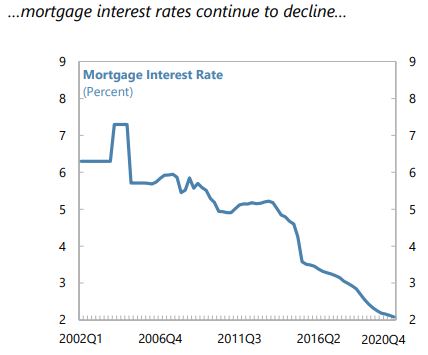
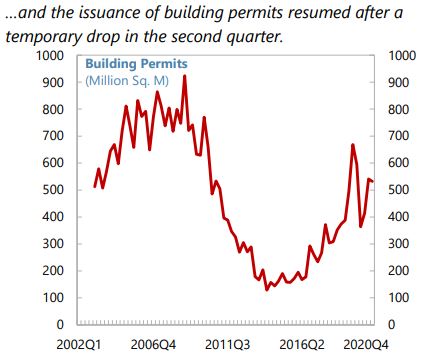
From the IMF’s latest report on Cyprus:
“Nevertheless, challenges are building. Nearly half of legacy NPLs were terminated five years earlier, potentially requiring sizable write-downs (Annex VI). Foreclosures have been suspended until end-July for smaller, collateralized loans and proposals under discussion in Parliament are expected to weaken the framework (¶22, third bullet). More than 80 percent of bank loans are to highly leveraged households and SMEs, concentrated in sectors like accommodation,
Posted by at 3:27 PM
Labels: Global Housing Watch
Tuesday, June 15, 2021
Housing Market in Denmark
From the IMF’s latest report on Denmark:
“Credit to households and house price growth accelerated during the pandemic. Before the pandemic, household leverage was high. Credit growth stalled at the onset of the pandemic but strongly recovered in 2020H2, driven primarily by mortgage lending. Residential property prices rose sharply in 2020H2, particularly for summer-houses, likely partially influenced by a temporary increase in tax deductions for summerhouse owners (…).
Macrofinancial vulnerabilities due to high and increasing household leverage amid high house valuations warrant close monitoring. High debt, combined with illiquid assets (concentrated in real estate via housing and pension assets) exposes households to price and interest rate shocks that can impact their balance sheet asymmetrically and spillover to aggregate demand. Continued strong house price growth increases the likelihood of a revaluation that could harm highly-leveraged households, particularly those who purchased in overvalued urban areas and low-income households. These vulnerabilities are compounded by the still large proportion of variable-rate and interest-only mortgages in the system (…). Moreover, MCIs and pension and insurance companies are highly interconnected and dependent on the health of the housing sector.
Recent developments warrant tightening prudential tools while deploying coordinated tax and housing supply policies.
–Macroprudential policy. The authorities should shift focus toward income-based measures, including tightening debt-to-income (DTI), LTI, and debt-service-to-income caps would help address high leverage and encourage faster amortization, as loan-to-value (LTV) constraints are less binding in the current environment with high house price growth. The authorities should tighten DTI restrictions for all loans, irrespective of their LTV ratios. DTI caps could be differentiated based on borrowers’ riskiness. Highly-leveraged households should be subject to mandatory amortization, regardless of maturity- and rate-type (SIP 2018). Tighter limits on income-based measures for interest-only and floating-rate mortgages or higher minimum down-payment requirements should also be considered. The proposed risk-based prudential framework could be combined with the macroprudential setup to facilitate calibration of these measures, especially for lower risk groups, e.g., first-time home buyers.
–Tax policy. The tax treatment of owner-occupied housing remains favorable relative to other savings and compared to most OECD countries. Taking advantage of the current low rate environment, MID should be reduced in a manner consistent with the overall tax framework.48 Staff recommend prioritizing reforms to better link property taxes to current market valuations. Balancing tax incentives for pension contributions could release resources for larger down-payments.
–Housing supply. Rent controls in Denmark are high relative to peer countries and should be reduced to stimulate the rental market, while protecting the interests of the most vulnerable. Review of urban area restrictions on the size of new apartments should continue to improve demand-supply mismatches. Streamlined zoning and planning procedures across municipalities could increase supply, thereby alleviating price pressures.”
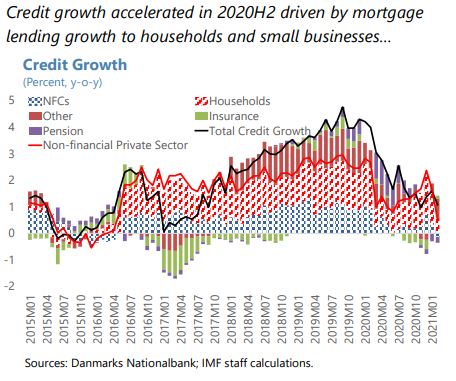
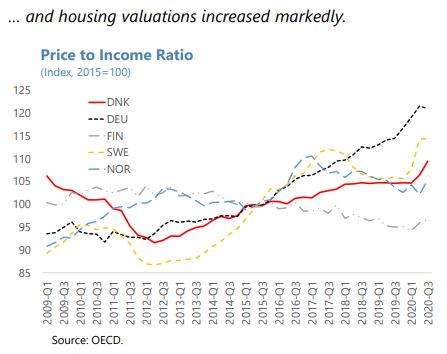
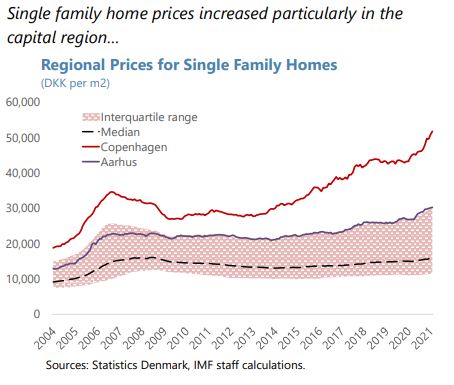
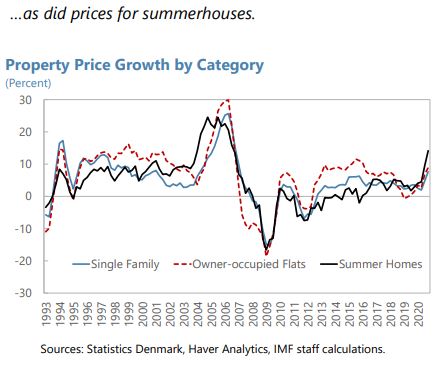
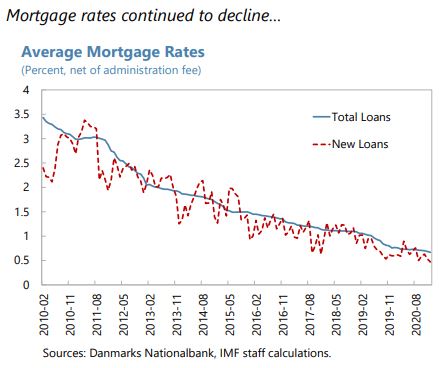
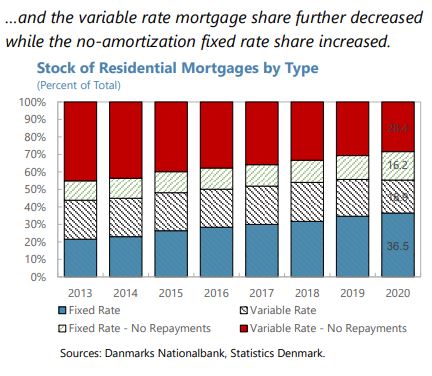






From the IMF’s latest report on Denmark:
“Credit to households and house price growth accelerated during the pandemic. Before the pandemic, household leverage was high. Credit growth stalled at the onset of the pandemic but strongly recovered in 2020H2, driven primarily by mortgage lending. Residential property prices rose sharply in 2020H2, particularly for summer-houses, likely partially influenced by a temporary increase in tax deductions for summerhouse owners (…).
Macrofinancial vulnerabilities due to high and increasing household leverage amid high house valuations warrant close monitoring.
Posted by at 4:05 PM
Labels: Global Housing Watch
Subscribe to: Posts




